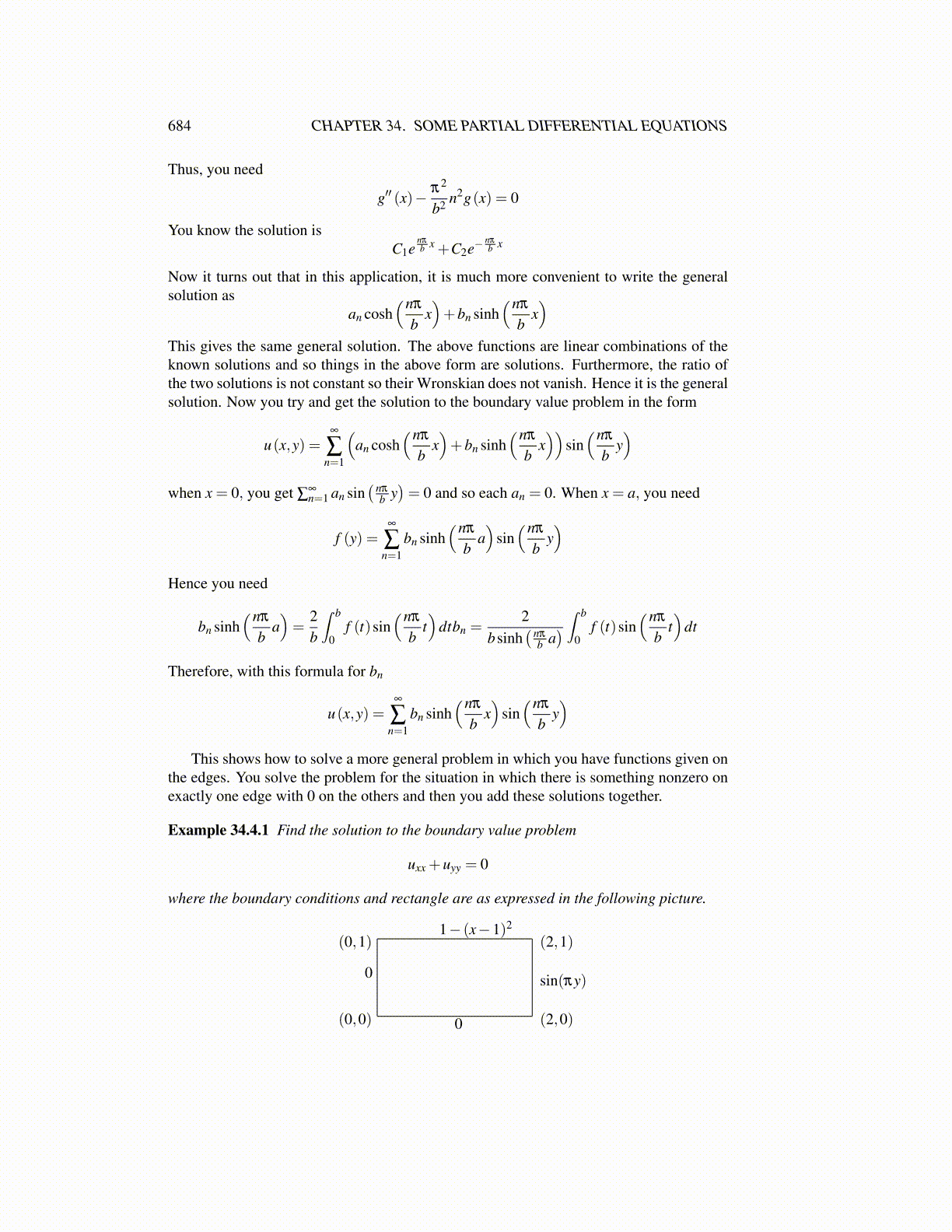
684 CHAPTER 34. SOME PARTIAL DIFFERENTIAL EQUATIONS
Thus, you need
g′′ (x)− π2
b2 n2g(x) = 0
You know the solution isC1e
nπ
b x +C2e−nπ
b x
Now it turns out that in this application, it is much more convenient to write the generalsolution as
an cosh(nπ
bx)+bn sinh
(nπ
bx)
This gives the same general solution. The above functions are linear combinations of theknown solutions and so things in the above form are solutions. Furthermore, the ratio ofthe two solutions is not constant so their Wronskian does not vanish. Hence it is the generalsolution. Now you try and get the solution to the boundary value problem in the form
u(x,y) =∞
∑n=1
(an cosh
(nπ
bx)+bn sinh
(nπ
bx))
sin(nπ
by)
when x = 0, you get ∑∞n=1 an sin
( nπ
b y)= 0 and so each an = 0. When x = a, you need
f (y) =∞
∑n=1
bn sinh(nπ
ba)
sin(nπ
by)
Hence you need
bn sinh(nπ
ba)=
2b
∫ b
0f (t)sin
(nπ
bt)
dtbn =2
bsinh( nπ
b a) ∫ b
0f (t)sin
(nπ
bt)
dt
Therefore, with this formula for bn
u(x,y) =∞
∑n=1
bn sinh(nπ
bx)
sin(nπ
by)
This shows how to solve a more general problem in which you have functions given onthe edges. You solve the problem for the situation in which there is something nonzero onexactly one edge with 0 on the others and then you add these solutions together.
Example 34.4.1 Find the solution to the boundary value problem
uxx +uyy = 0
where the boundary conditions and rectangle are as expressed in the following picture.
(2,1)
(2,0)(0,0)
(0,1)
sin(πy)
1− (x−1)2
0
0